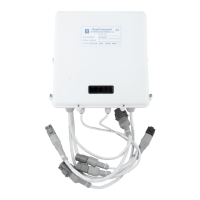• Check the voltage of the battery. The battery must have a chance to “rest” (no charging and
no load for a couple of hours) prior to testing. The following table represents a fully charged
battery:
• Check the battery terminals for signs of corrosion, acid build-up or loose connections.
9.3.1.2 Semi-Annually (Every 6 Months)
• Check the specific gravity of your Lead-Acid battery(s) with a Hydrometer. The reading for a
fully charged lead acid battery is 1.260 to 1.280.
9.3.1.3 Annually (Every 12 Months)
The tests performed on quarterly and semi-annual basis, give a relatively good indication of the
batteries’ health. However, the only way to accurately determine the actual health of your battery is to
perform a Battery Load Test.
• There are two types of Battery Load Tests performed in the field, Performance and Service.
In order to determine the actual health of your battery a Performance Load Test is
recommended. The Service Load Test determines how well your battery performs in the
boat and doesn’t take into account the battery’s original rating, which could result in
misleading results. The Performance Load Test places an accurate load on the battery and
compares the results to the battery manufacture’s specification. The battery should be
replaced if the results are 80% or less than the manufacture specifications.
9.3.2 Power Cables, Distribution Panels, etc.
• Check all of the connections from the battery to the DC Distribution Panel to the APS for loose
or corroded connections.
• Measure the voltage at the battery and at the Processor while the Clutch or Throttle Servo is
driving. There should be no more than 10% difference between these two points. If so,
check all devices and connections for excessive voltage drop.
Table 9-1: Fully Charged Battery
Lead Acid Batteries Gel Cell or AGM Batteries
12V – 12.6 to 12.8V 12V – 12.4 to 12.6V
24V – 25.2 to 25.6V 24V – 25.0 to 25.4V
WARNING: The Battery Load Test should be performed by a qualified Marine Electrician only.
NOTE: If an APS is used in the circuit to supply power to the Processor, account for the 0.7V drop across the
APS. Example: 12.6V @ battery – 1.26V (10% drop) – 0.7V (APS drop) = 10.64V (Minimum allowable voltage)

